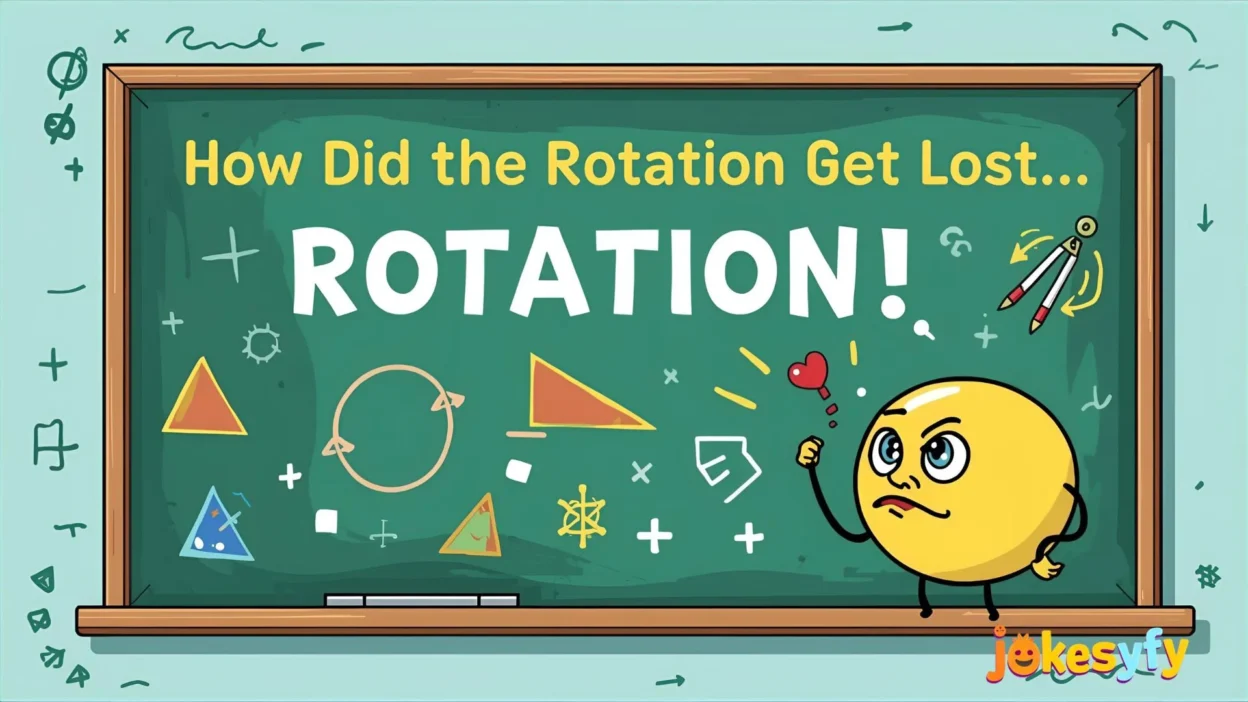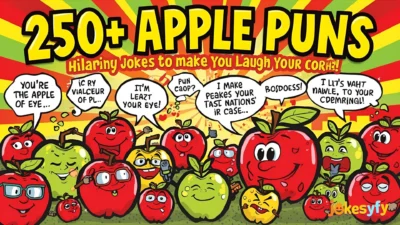The riddle “How did the rotation get lost?” is one of those quirky math jokes that travels across classrooms, social media, and puzzle sites. On the surface, it sounds like a serious geometry or physics question. But the more you think about it, the more it reveals its playful, pun-filled nature.
Unlike ordinary jokes, this one blends mathematics, wordplay, and logical misdirection. It’s been shared in classrooms, added to joke collections, and even debated on homework forums. While many sites simply list punchlines like “It took the wrong angle” or “It turned wrong,” few actually explain why those punchlines make sense or how math concepts support the joke.
That’s exactly what we’ll do here. This article gives you the funniest answers and also digs deeper into the educational, logical, and conceptual sides of the riddle — making it both entertaining and informative.
Let’s start by understanding what this riddle is really asking.
What Does “How Did the Rotation Get Lost?” Mean?
- The phrase is a setup for a pun — it sounds like a technical math problem but is really a joke.
- Rotation can mean:
- A geometric transformation (turning around a point).
- Physical spin (as in a rotating object).
- A “turn” in everyday life (“It’s your rotation to go next”).
- Lost can mean:
- Literally vanished.
- Misunderstood or confused.
- Went in the wrong direction.
- Because both words have multiple meanings, the riddle creates room for funny misinterpretations.
- It’s popular on math joke lists, educational humor blogs, and Q&A sites.
👉 In short: this riddle isn’t about solving an equation — it’s about catching the joke hidden in the phrasing.
Classic Punchlines to the Riddle
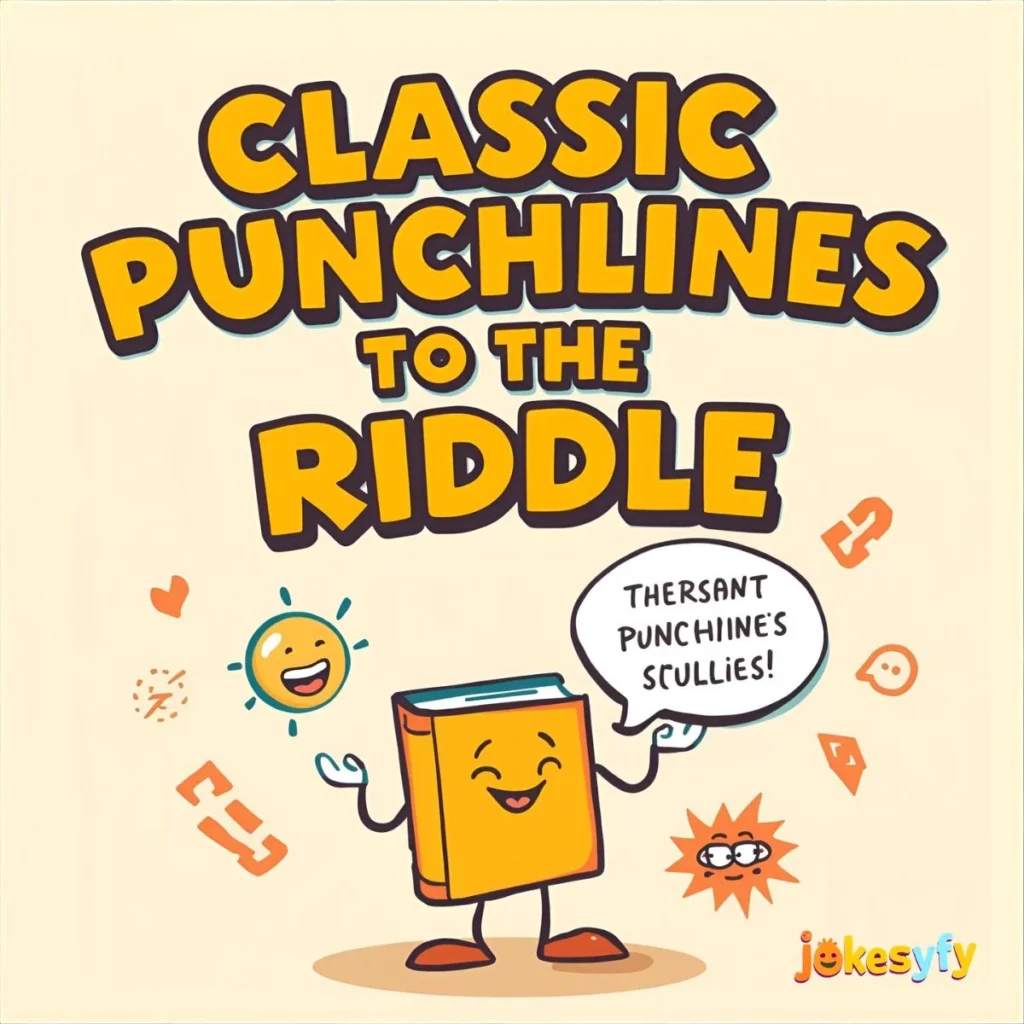
Here are the most common answers people give when asked “How did the rotation get lost?”:
- “It turned wrong.”
- “It took the wrong angle.”
- “It spiraled out of control.”
- “It never existed in the first place.”
- “It lost its point of reference.”
- “It was canceled by friction.”
- “It disappeared when you stopped watching.”
- “It went in circles until it forgot the way back.”
- “It reflected instead of rotating.”
- “It rotated into oblivion.”
🎯 Among these, the two most famous are:
- “It turned wrong.”
- “It took the wrong angle.”
Both use clever wordplay by connecting geometry terms (turn, angle) with everyday mistakes.
Why “It Turned Wrong” Works Best
- In geometry, a rotation is literally a “turn.”
- Saying it “turned wrong” is a pun:
- Literal meaning: The rotation moved incorrectly.
- Joke meaning: It “made a wrong turn” like someone lost on the road.
- This punchline is short, clever, and easy to remember, which is why many math joke sites treat it as the “official answer.”
- It plays on the classic joke structure: a question that sounds serious but ends with a punny twist.
The “Wrong Angle” Punchline Explained
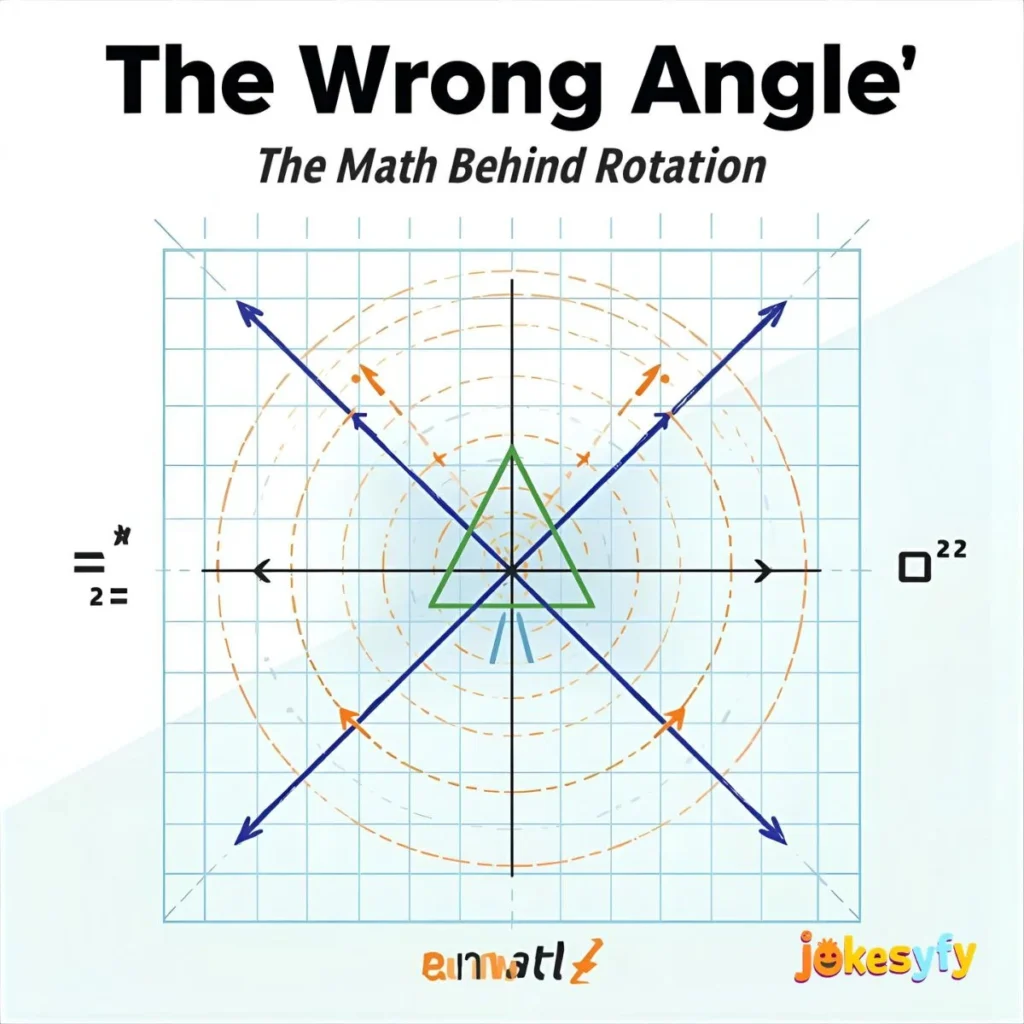
- Angles are fundamental in geometry.
- Saying the rotation “took the wrong angle” connects math with life situations:
- Literal: An object rotated by the wrong degree.
- Figurative: Like a person taking the wrong road turn.
- It works well because it doubles as both math humor and life humor.
- Teachers often use this punchline because it’s easy for students to get.
- Other Funny Variants You Can Use
Here are some creative variations you can share with friends or students:
- “The rotation got lost because it missed its axis.”
- “It reflected instead of rotating and confused itself.”
- “It was translated away instead of rotated.”
- “The circle said, Sorry, you’re going in loops!”
- “It had no center of rotation to guide it.”
- “It spun so much it got dizzy and lost.”
- “It was interrupted by a reflection line.”
- “It confused degrees with radians.”
- “It was out of phase with everyone else.”
- “It was eaten by a black hole of geometry.”
👉 Unlike the competitor page, here each variant is followed by a logical or funny twist to make the punchline more satisfying.
The Math Behind Rotation
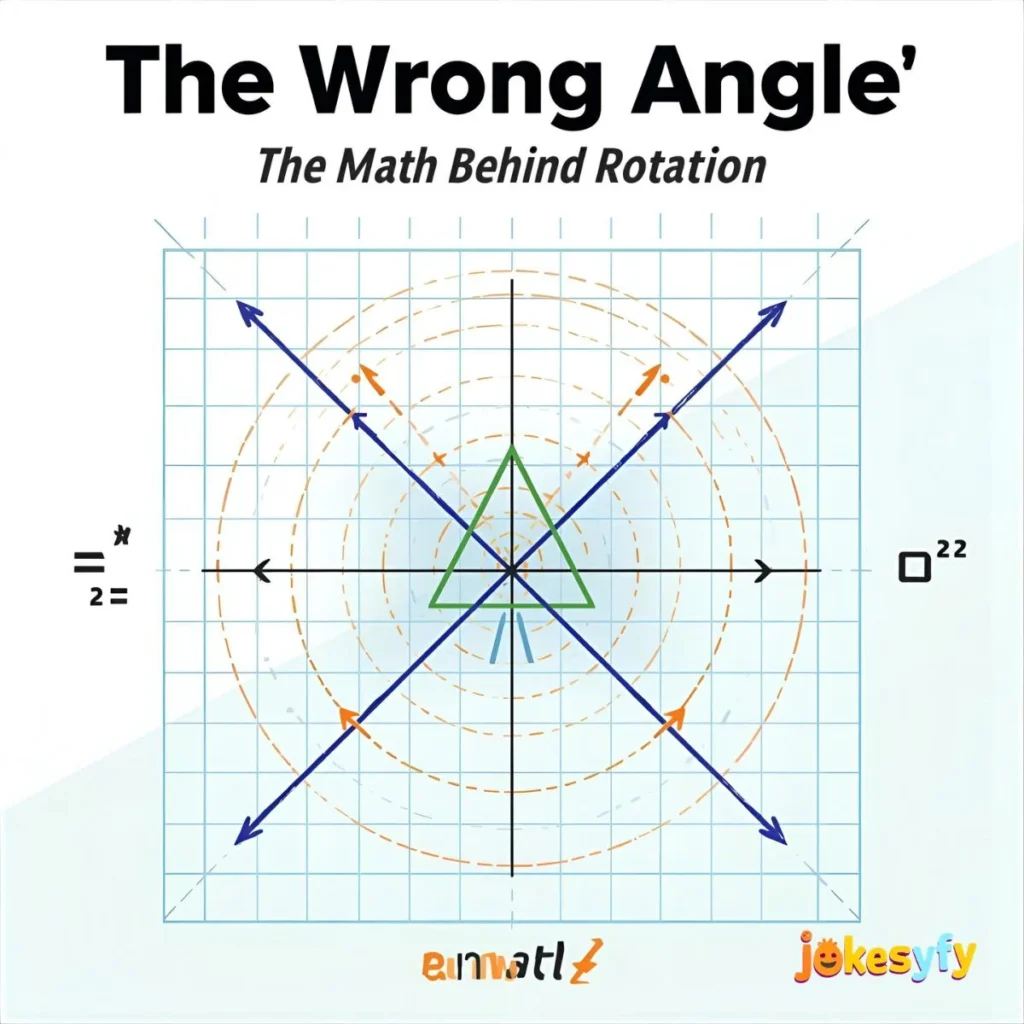
Even though this is a joke, understanding real math concepts helps:
- Rotation in Geometry
- A rigid transformation around a fixed point by a given angle.
- Properties preserved: distance, shape, orientation.
- Rotation in Physics
- Objects spin due to torque or angular momentum.
- They can slow down from friction or external force.
- Reference Frames
- Whether you “see” a rotation depends on your point of view.
- If you rotate with the object, it looks still.
- Why This Matters for the Joke
- Because in some frames, rotations do seem to disappear.
- So the idea of “lost rotation” can actually have a physics flavor.
How Teachers Can Use This Joke in Class
- Start a lesson on transformations by asking this riddle.
- Use it to review terms: angle, axis, orientation, reference point.
- Ask students to invent their own punchlines.
- Show how language ambiguity can affect math understanding.
- Break the tension in a geometry class with humor.
- Encourage creativity: not all answers must be “correct” — they can be funny but logical.
- Use it as a transition to problem-solving puzzles.
Step-by-Step Riddle Solving Method
- Hear the riddle: “How did the rotation get lost?”
- Recognize it’s not a serious problem but a joke.
- List possible meanings of “lost” and “rotation.”
- Connect meanings to possible punchlines.
- Choose the one that gives a clever, funny twist.
- Share it — and wait for the laugh (or groan!).
This method can be used for similar math wordplay riddles.
Common Misconceptions About the Riddle
- It’s a serious math problem. → No, it’s a joke.
- There’s only one right answer. → Actually, many punchlines work.
- It’s meaningless. → Wrong — it teaches how language and math interact.
- It’s new. → Versions of this joke have circulated for years.
- It’s for kids only. → Adults, students, and teachers all enjoy it.
Real-World Analogies for “Lost Rotation”
- A spinning top slowing down until it stops.
- A fan turned off, losing its spin.
- A driver taking the wrong turn at a roundabout.
- A compass needle spinning wildly and losing north.
- A smartphone screen that doesn’t rotate when you tilt it.
👉 These analogies make the joke relatable beyond math class.
Educational Benefits of Math Riddles
- Build critical thinking by forcing students to question assumptions.
- Improve vocabulary awareness — words can mean different things in math vs daily life.
- Make learning fun and memorable.
- Encourage collaboration as students share their versions.
- Reduce anxiety by mixing humor into lessons.
FAQ Section
Q1: What’s the most popular answer to “How did the rotation get lost?” A: The most common punchline is “It turned wrong” or “It took the wrong angle.”
Q2: Is this a real math or physics concept? A: No, it’s a joke riddle that uses math terms for humor.
Q3: Can this riddle teach anything? A: Yes, it highlights how math language and everyday language overlap.
Q4: Are there other riddles like this? A: Yes, examples include “Why was the equal sign humble?” (Because it knew it wasn’t less or greater).
Q5: How can I use this with kids? A: Share it in class, let them guess answers, and encourage them to create new punchlines.
Conclusion
So, how did the rotation get lost? The funniest and most popular answer remains: “It turned wrong.” But depending on how you interpret “rotation” and “lost,” other punchlines like “It took the wrong angle” or “It spiraled out of control” also work.
Unlike many competitor sites that only list jokes, we’ve explored both the humor and the logic behind this riddle. By understanding the math concepts of rotation and playing with word meanings, you can see why this joke keeps circulating — it’s simple, funny, and timeless.
Next time someone asks you “How did the rotation get lost?”, you’ll be ready with both a punchline and a deeper explanation.

I am Charles K Baxter, a humor enthusiast passionate about spreading joy and positivity through laughter.

